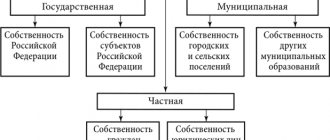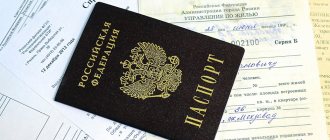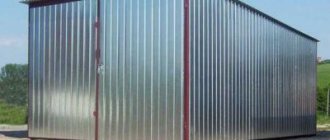Owning a plot of land is not only the presence of rights, but also direct responsibilities associated with paying taxes, and sometimes maintaining and submitting documentation. One of such documents is a household ledger. It is necessary for the formation and structuring of information about the management of personal subsidiary plots by certain categories of citizens.
Such a document was initially used to form the tax base. It reflected the objects available on the territory of the land plot, including livestock and poultry. Now the document is used in other cases and contains an expanded data package.
What does a household ledger mean?
Household book - what is it? People first started talking about it before the war. The reason for its emergence was the need for constant accounting, which residents of villages and towns had to keep. On ordinary sheets of paper, they wrote down the number of livestock in their yard, as well as information about their other property. After this, the data on the inventory was entered into a special book, which began to be called the household book.
Currently, household books still exist and records are kept of them. Moreover, such a document is not only in written form, but also in electronic form in a rural settlement it can be obtained if necessary.
Electronic version
An electronic household book is a modern solution to many issues, a unique way to save time and is easy to use.
Thus, the Ministry of Agriculture decided to create an electronic system (database) in which all information about each of the citizens of the Russian Federation who owns a subsidiary plot will be stored.
The rules for its maintenance are similar, the only thing is that its renewal period is slightly higher than that stated earlier. This is justified by the large amount of information that first needs to be processed, approved, and only then transferred to the electronic system.
It is also noted that now every person can notify the state about the purchase of housing, land or an animal. It's very easy to do this:
- Go to the official website of the Electronic Household Book;
- Log in to your personal account (before this you need to register and wait until the administration confirms your identity);
- Among the available functions, select “Make an entry” and proceed to filling out a special form in which you can indicate changes in your farm using the “tick” method;
- After that, you just need to “save the changes” and send them for processing.
What is the book for?
Several decades ago, a household ledger was kept in order to collect taxes from residents of settlements. Currently, the need for this document is based on the fact that the state monitors in detail how private farming is carried out in the territory of each region. As already mentioned, information about the owners of subsidiary plots and their property is entered into the household register. It is worth noting that every year the information entered in the book must be updated.
The household register provides value not only for the authorities, but also for the owners of subsidiary plots themselves. This is explained by the fact that very often the rights of each owner to a particular plot of private household plots are contained in the household register. That is, an extract from this document, if necessary, can confirm the existence of a legal right to own the land, as well as the objects that are located on it.
You may need to obtain an extract from the household ledger in the following situations:
- It is necessary to register land rights.
- There is a trial in progress and a legal document must be submitted for review.
- It is planned to apply for a loan.
IMPORTANT !!! In addition, sometimes a household ledger can help obtain a tax exemption for land use.
And if there are animals on the territory, they are “automatically” registered with veterinarians, and this is very important, since the spread of dangerous diseases can be prevented in a timely manner.
To summarize, basically the household ledger performs the following functions:
- Provides authorities with annual reports on private household plots. This allows government officials to issue invoices for taxes, as well as provide plots of land for use to certain persons.
- Ensures that medical information about animals is obtained. Livestock, as well as birds, which are bred by members of the subsidiary farm, like other animals, can get sick and, moreover, cause the spread of serious and dangerous diseases for humans. The household book contains information about whether vaccinations were given, what injections were given to the animals, whether vitamins were administered, as well as whether the veterinarian visited the animals and, if so, for what reason.
- Allows you to get statistics. A household ledger helps keep track of statistics on each plot. That is, if necessary, the authorities can find out how many animals are bred on the territory of a particular farm, how many plots are leased, how many farms are operating, etc.
As the current law states, two years ago the 2017-2021 household books were re-booked (a sample can be found on the Internet), that is, for five years. This suggests that if there are any changes in the private household plots (it is planned to buy new livestock or build a new building), it is necessary to report them to the local administration so that all the data is up to date.
On the organization of economic accounting
| APPROVED Resolution of the Council of Ministers of the Republic of Belarus 15.11.2005 № 1273 |
INSTRUCTIONS on organizing household accounting
CHAPTER 1 GENERAL PROVISIONS
1. This Instruction determines the procedure for organizing economic accounting and maintaining:
the household book of the rural (settlement) executive and administrative body in form 1 (hereinafter referred to as the household book);
books of registration of certain categories of the population living on the territory of the village council, according to form 2;
a list of specialized institutions located on the territory of the village council, according to Form 3;
accounting books of houses whose owners are not registered on the territory of the village council, and houses that do not have an owner, according to form 4;
alphabetical book of households according to form 5.
2. For the purposes of these Instructions, the following terms and their definitions are used:
household (household) - a group of persons who live together in a residential building, provide themselves with everything necessary for life, run a common household, fully or partially pooling and spending their funds, or one person living independently and providing themselves with everything necessary for life;
bookmarking of household books - initial filling of personal accounts in household books;
specialized (institutional) institutions - institutions intended for the residence of collective households, that is, groups of people living together in the same residential premises, eating together, but not having individual budgets and common consumer expenses, subject to general rules and usually not related by family relations.
3. Economic accounting according to the documents specified in paragraph 1 of these Instructions is carried out in all rural (settlement) executive and administrative bodies, as well as in city and district executive and administrative bodies in the rural settlements subordinate to them.
4. The required number of household books numbered, laced and sealed by the district executive and administrative body, as well as other documents of economic accounting and this Instruction are issued by the district executive and administrative body against receipt to the employee appointed by the decision of the rural (settlement) executive and administrative body responsible for them safety, timely and reliable maintenance of household records (hereinafter referred to as the responsible person).
5. Household accounting documents must be stored in specially equipped rooms or in locked metal cabinets (safes).
6. Household books, books of accounting of houses whose owners are not registered in the territory of the village council, and houses without an owner (form 4), and alphabetical books of households (form 5) are valid for 5 years from the date of bookmarking of household books.
Books of registration of certain categories of the population living on the territory of the village council (form 2) and lists of specialized institutions located on the territory of the village council (form 3) are valid during the calendar year.
7. Bookmarking of household books is carried out on January 1 of the year following the year of expiration of the household books of the previous five-year period, by means of a continuous walk-through from January 1 to January 20 of households and interviewing owners, tenants or, in their absence, adult household members.
In subsequent years, rural (settlement) executive and administrative bodies, from January 1 to January 20, clarify the records of personal accounts in household books.
In order to avoid missing individual residential buildings and settlements, the responsible person, before starting to bookmark the household books, compiles a list of all residential areas and individual residential buildings located on the territory of the village council. It is also necessary to check the presence of households permanently residing on the territory of the village council in residential premises of the state housing stock, housing construction and housing cooperatives, boarding houses for the disabled, veterans, single and elderly people, other social institutions, boarding schools, orphanages and others boarding institutions, organizations that have housing stock under the right of economic management or operational management.
If necessary, persons from village and town Councils may be involved in the work of setting up household books or clarifying records of personal accounts in them.
After clarifying the list of settlements, it is necessary to distribute the settlements among the persons involved in the work of setting up household books or clarifying the entries of personal accounts in them. Lists of persons involved in the work of setting up household books or clarifying personal account records in them are approved by a decision of the village (settlement) executive and administrative body, indicating who and in which settlements, on which streets is entrusted with bookmarking household books or clarifying personal account records accounts in them. The work of persons involved in setting up household books or clarifying personal account entries in them is supervised by a responsible person who issues household books against signature and accepts them, while monitoring the correctness of the entries, the clarity and validity of the changes and clarifications made.
CHAPTER 2 ORDER OF OPENING AND CLOSING HOUSEHOLD PERSONAL ACCOUNTS IN THE HOUSEHOLD BOOK
8. A separate personal account is opened for each household in the household ledger. At the same time, a separate personal account is opened for subtenants permanently residing in the household’s residential premises.
9. Members of households who permanently reside on the territory of the village council* are recorded in the household register, regardless of whether they have residential buildings, outbuildings or livestock. An entry in the household ledger without visiting each household is unacceptable.
______________________________
*Including military personnel (except for conscripts and cadets of military educational institutions) and members of their families assigned to a military unit.
10. For each settlement with more than 20 residential buildings, a separate household book is opened. Upon completion of the bookkeeping of each settlement or street in a settlement, several free sheets are left in it in order to be able to open personal accounts for newly formed households in this settlement or street.
11. On the title page of each household ledger, the name of the settlements is indicated with a note against each of them, the page numbers on which the personal accounts of the households of these settlements are located.
12. Upon completion of a continuous walk-through of houses in all settlements and the opening of personal accounts for all households in the household books, household personal accounts are numbered, which must be continuous and uniform throughout the village council. It is not allowed to establish separate numbering of household personal accounts for each locality. The numbers assigned to personal accounts and household ledgers are used when filling out the alphabetical household ledger (Form 5).
13. When a new household is formed on the territory of the village council, after storing the household books, it is assigned the next serial number of the personal account in the household book, regardless of in which locality the household was formed and with what personal account number the household books for this locality were completed.
For the convenience of assigning serial numbers to newly formed households, at the end of the alphabetical book of households (Form 5), a memo is created on a blank sheet of paper in which the number of the last personal account of the household is written down.
14. The personal account number is constant for a given household for the entire period of validity of the household books.
When all members of a household move to a permanent place of residence from one locality to another within the same village council, as well as in the case of a household moving to a permanent place of residence from one street to another within the same locality, the personal account number of the household in the household register does not change. In this case, it is necessary to close by crossing out the personal account of this household in the household register of the locality from which the household left, and open a personal account in the household register of the locality in which it arrived for permanent residence. When a household’s personal account is closed at its previous location, a note is made in the upper part indicating the date and reason for its closure, for example: “the personal account is closed (indicate the date) due to the household moving to a permanent place of residence in the village of Vysokoye.”
The household's personal account number does not change if the owner or tenant is replaced by another person from the same household (for example, due to death or other reasons).
In these cases, the household’s personal account is not transferred to a new one, but the last name, first name and patronymic of the person replacing the owner or tenant are indicated at the top of the personal account, and the previous entry is crossed out. Information about the family relationships of household members previously recorded is crossed out and replaced.
15. When one household is divided into two or more, the persons separated from the household are excluded from the household’s personal account by deleting. At the bottom of the household’s personal account, in the “Additional information” line, it is written about. A new personal account is opened for the newly formed household in the corresponding household book and in the line “Additional information” the name and date of the document that formalized the division of the previous household is entered and indicated.
16. When two or more households are merged into one, the personal account of one of these households is retained with its previous number, while additional entries are made to the personal account in Section I “Information about household members”. In the line “Additional information” it is written about. The personal account of another household is closed with a note at the top of it: “personal account closed (specify date) due to merger with household number...”.
17. In the event of a household leaving a permanent place of residence outside the boundaries of a given village council, as well as a household leaving due to death, the personal account of such households in the household book is closed, indicating in the upper part the date and reason for the closure, and at the same time the personal account in the household book is crossed out.
The numbers of closed personal accounts in household books should remain free and not be assigned to other newly emerging households.
CHAPTER 3 PROCEDURE FOR COMPLETING THE HOUSEHOLD BOOK (FORM 1)
18. The household ledger consists of personal accounts, which contain three sections.
19. In the title part of the personal account in the household ledger, the personal account number of the household, the last name, first name and patronymic of the owner, tenant in whose name the personal account is opened in it, the household address, and telephone number are indicated.
20. Section I of the household ledger is designed for a household with no more than 6 members. If a household consists of more than 6 members, then two sheets should be allocated to record all members, or an insert should be made if the household increases during the validity period of the household books.
In the line “Last name, first name, patronymic” information about the owner, tenant and members of his household is recorded on the basis of relevant documents.
21. The line “Relationship to the owner, tenant” indicates information about the family members of the household to the owner, tenant or relationships arising from marital relations: mother, father, sister, brother, daughter, son, wife, husband and others. In this line, information about the family relationships of household members to each other, not to the owner or tenant, is not indicated. In relation to orphans and children left without parental care who are being raised in the household, “foster care” is indicated.
22. In the line “Day, month, year of birth (in addition, for those born after the bookkeeping of household books, indicate the date and number of the birth certificate in brackets)” the information is filled in on the basis of the relevant documents (passport, birth certificate) of each household member.
23. The line “Citizenship” indicates the state of which the person being interviewed is a citizen. For persons without citizenship, the entry “stateless” is made.
24. The line “Where and by whom he works” indicates the name of the organization where the person works and the type of activity (name of position, profession or work performed).
25. Subsequent changes in work (if they have occurred) are made during a complete check and clarification of the records of personal accounts in the household books.
26. Entries in the line “Note on temporarily absent household members (indicate the date and reason for leaving and returning to the household)” are made in the following order:
a note on temporarily absent persons is made for persons who were absent on the date of entering the household books, or clarification of previously made entries in the household books. The return of these persons is noted upon arrival in the household.
Marks are made indicating the date of departure and return, as well as the reason for disposal.
Temporary absence marks are given to household members:
in the case of studying in institutions providing vocational, secondary specialized and higher education, general education schools, boarding schools with accommodation at the location of the educational institution;
persons working outside the territory of the village council and temporarily residing at the place of work;
persons called up for military service;
persons sent to places of deprivation of liberty;
persons who left for orphanages, homes for the disabled, for long-term treatment in health care institutions located outside the territory of the village council;
tenants, subtenants registered on the territory of the village council, but actually living in cities and urban-type settlements.
The issue of classifying persons as absent or retired is decided in relation to a specific person by the rural (settlement) executive and administrative body.
27. In the line “Note on the departed members of the household (indicate the date and reason for departure)” the date and reason for the departure of the household members are indicated. Moreover, it is necessary to make a note in the records of departure for all reasons (except death) whether this person left for permanent residence to another household of the given village council or outside its territory.
28. In the line “Note on persons newly arrived on the territory of the village council (indicate the date of arrival and where they arrived from)” a note is made on persons newly arrived on the territory of this village council, indicating the date and place of departure. For example: “arrived on December 8, 2006 from Polotsk.”
Persons who arrived in the household from another household in the given village council are recorded in the household register without Fr.
New arrivals are noted upon their arrival.
29. In the line “Note on pensioners and subsequent changes in the type of pension”, entries are made about persons receiving an old-age pension, loss of a breadwinner, disability (indicating the disability group), and other types of pension. The mark is made on the basis of pension books or certificates issued by social security authorities. For example: “age pensioner”, “Group I disabled person of the Great Patriotic War”, “Group II labor disabled person”.
30. In section II of the household ledger, information about the residential building and its improvement is recorded. For residential buildings built after May 7, 2003, information is recorded on the basis of a technical passport.
If a residential building is owned by two or more citizens, then in the personal accounts of each of these households in the line “Total area of a residential building” the corresponding shares should be recorded, for example: “1/2 of a house” indicating the total and living area, and in the section II above the table are the personal account numbers of each household.
For multi-apartment residential buildings, the line “Total area of a residential building” is not filled in.
If a citizen owns two or more houses on the territory of the village council, then information about each house should be recorded in Section II.
For citizens who live and do not own a house, an entry is made in Section II above the table: “lives under a residential lease agreement.”
When filling out data on the year of construction of a residential building, if the house was built before 1945 and the exact year of construction is unknown, you should write “before 1945.” When a residential building was built after 1945 and it is impossible to determine the year of construction, the inscription “not determined” is written.
In relation to a residential building moved to a new location, the line “Year of construction of the residential building” indicates the year the building was moved to a new location from the island.
In the line “Wall material” it is indicated from what material the residential building is constructed: stone, brick, panel, frame-panel, block, volumetric block, monolithic concrete, monolithic reinforced concrete, cellular concrete, cinder block, wooden (chopped, cobbled), mixed (brick and wood), prefabricated panel, from other wall materials.
31. If there are or are not certain types of amenities in a residential building (water supply, sewerage, heating, gas), the data is respectively recorded in the lines “yes” and “no”.
A residential building is considered equipped with:
water supply - if there is a water supply distribution network inside the building, into which water is supplied centrally from a water supply system or an artesian well, as well as if there is a separate kitchen (a specially designed permanent building in which a water tap from the water supply distribution network is installed). If there is a water tap (column) in the yard and there is no entrance to the house, then the area of such buildings equipped with water supply is not considered;
sewerage - if inside the building there is a sewerage device for draining household and fecal water into the street sewer network, or absorption wells, or septic tanks in the yard, and the area equipped with sewerage should not be larger than the area equipped with water supply;
central heating - regardless of the source of heat supply; from your home boiler house, group (quarter), united and district boiler houses, from a combined heat and power plant (CHP), as well as the installation of an automatic gas water heater (AGW);
hot water supply - provided that it is equipped with a special water supply system that supplies hot water centrally to apartments for the household needs of residents (including the area of houses equipped with local water heaters);
baths (showers) - regardless of the method of supply of hot water and the hot water supply system. Buildings in which bathtubs (showers) are installed, but there is no sewage system, should not be considered equipped with baths (showers);
gas - if there is an installed floor-mounted gas stove, both in the house itself and in a separate kitchen, supplied with network or liquefied gas.
If a household uses a tabletop gas stove supplied with gas from a portable cylinder, the home is not considered gas-equipped.
A residential building is considered to be equipped with electric stoves if floor electric stoves are installed.
The area of a residential building is considered to be equipped with one or another type of improvement even in cases where this type of improvement is temporarily inactive (for example, due to repairs).
32. If a residential building equipped with water supply, sewerage, central heating or gas is owned by two or more owners who jointly use the listed types of amenities, then notes on the availability of amenities are made in each personal account.
33. The line “Information on the presence of outbuildings and structures on the land plot” reflects outbuildings and structures (bathhouse, barn, cellar, garage and others).
34. The data in Section III of the household book in the line “Area of the land plot - total” must correspond to the information in the land cadastral documentation as of January 1.
Data on the size of the sown area of agricultural crops for the harvest of the reporting year and the production of crop products for the year are filled out through a complete household visit as of November 1 from the words of the owner, tenant or adult family member.
Section III of the household ledger is not completed for peasant (farm) holdings.
The line “Land area - total” reflects the total size of the land area. The total land area includes: arable land (area used for planting agricultural crops), land under permanent crops (perennial plantings and berry fields), land under permanent buildings, land permanently occupied by perennial grasses and used for haymaking and grazing (including the area additionally allocated plots for temporary use).
The line “Including privately owned” shows the area of land that is privately owned, which is formalized by a state act.
The line “Area of the land plot built up with capital buildings” reflects the area of the land plot built up with outbuildings and structures, residential buildings.
35. The line “Cultivated area - total” shows the total sown area of agricultural crops, including their crops in the rows of gardens. This line also reflects the crops of fodder root crops, annual and perennial grasses and other agricultural crops (medicinal, essential oils, intended for use as green manure (green manure sowing).
The total sown area and the corresponding crops also reflect additionally allocated land plots for the harvest of the reporting year.
The sown area of agricultural crops can be equal to or greater than the sum of the areas of grain and leguminous crops, potatoes, vegetables, fodder root crops, annual and perennial grasses.
The line “grains and legumes” shows the area of winter and spring crops from which the grain harvest was obtained (rye, wheat (winter and spring), triticale (winter and spring), barley (winter and spring), oats and others. For crops grain leguminous crops should include peas, beans, vetch, pelyushka, including their mixtures (for grain). Grain crops harvested for hay or green mass are shown in the line “annual and perennial grasses.”
The line “potatoes” takes into account the area of potatoes, regardless of the further use of its crop (for food, for seeds, for feed purposes or for sale).
The line “vegetables (open and protected ground)” reflects the area of open and protected ground vegetables. The areas of protected soil include the areas of stationary greenhouses (greenhouses with film or other cover).
The following types of vegetable crops are distinguished: cabbage, cucumbers, tomatoes, beets, carrots, onions, peppers, radishes, radishes, zucchini and pumpkin (food), peas and beans (for canning), green beans, green crops (dill, lettuce, spinach, celery, parsley, sorrel, onion) and others.
The sown area of vegetables includes crops of annual vegetable crops intended only for obtaining seeds, as well as the area of queen cells planted with two-year vegetable crops (carrots, beets and others).
The line “fodder root crops” reflects the crops of fodder root crops, including testes and mother plants of fodder root crops.
The line “annual and perennial grasses” reflects the area of sown annual and perennial grasses.
36. Data on production by type (grain, potatoes, vegetables, fodder root crops, fruits and berries) are filled in based on harvesting results. The total volume of production (for the relevant crops) includes the collection from both household plots and additionally allocated land plots.
The “Grain” line shows the physical weight of the grain after harvesting it with combines or manually.
The line “Potatoes” reflects the collection of potatoes from all areas, including their collection after plowing and harrowing.
The line “Vegetables – total” shows the collection of open and protected ground vegetables.
The line “Including in protected ground” reflects the collection of vegetable products obtained only in protected ground.
The line “Forage root crops” shows the total collection of fodder beets, rutabaga, turnips and other fodder root crops intended for feed purposes.
The line “Fruits (pome and stone fruits)” shows the collection of pome fruits (apples, pears) and stone fruits (plum, cherry, sweet cherry, apricot) and others.
The line “Cultivated berries” shows the collection of cultivated berries (strawberries, strawberries, raspberries, currants, gooseberries and others).
37. Data in the lines about the presence of the main types of livestock, poultry, rabbits, bee colonies and fur-bearing animals are filled out as of January 1.
The line “Cattle - total” reflects the number of cows, heifers, bulls, calves, sires, regardless of their age.
The line “cows” records the number of cows. Heifers that have been inseminated but have not yet given birth, regardless of age, are not reflected in this line, but are reflected in the line “Cattle - total”.
The line “Pigs” reflects the total number of pigs, regardless of their age.
The line “Poultry – total” reflects the number of birds of all ages (chickens, ducks, geese, turkeys, guinea fowl, quail and others).
The lines “Fur-bearing animals” reflect the presence of fur-bearing animals by type. Fur-bearing animals include minks, foxes, arctic foxes, freds, chinchillas, nutria and others. Types of fur-bearing animals are indicated on separate lines.
38. The data in the lines about the production of livestock products is filled in for the year as a whole (the year preceding the year of recording the household books or clarifying the entries of personal accounts in the household books). For example, on January 1, 2006, data is filled in for 2005, on January 1, 2007, data is filled in for 2006, and so on.
39. The line “Cattle and poultry for slaughter (in live weight)” reflects the live weight of livestock of all types (cattle, pigs, sheep, goats, rabbits and others) and poultry after their actual slaughter. This line reflects the live weight of livestock killed directly on your farm, regardless of whether the meat was used for personal consumption or sold (given in exchange), as well as sold for slaughter to other organizations or the population. The sale (transfer) of both adult livestock and young animals for the purpose of further raising (fattening) is not reflected in this line.
The line “Cow's milk produced” reflects all the milk actually produced from cows during the year, regardless of whether it was sold or used for personal consumption, livestock feed, and so on.
The line “Goat's milk supplied” shows the goat's milk received over the year.
The line “Eggs received from all types of poultry” reflects the entire collection of eggs for the year, regardless of their use.
The line “Honey received” reflects the entire collection of honey, both taken from the hives and left to feed the bees.
CHAPTER 4 PROCEDURE FOR COMPLETING THE REGISTRATION BOOK FOR SEPARATE CATEGORIES OF THE POPULATION RESIDING IN THE TERRITORY OF THE VILLAGE COUNCIL (FORM 2)
40. Rural (settlement) executive and administrative bodies are required annually, as of January 1, to fill out accounting books for certain categories of the population living on the territory of the village council (Form 2). Entries in books are kept systematically throughout the year.
For the purposes of this Instruction, the individual categories of the population subject to registration are:
tenants, subtenants and owners of residential premises who actually live on the territory of the village council, but are registered in cities and urban-type settlements;
persons who arrived to work under a contract for a period of up to 1 year.
In addition, persons living year-round in the houses of gardening associations (dacha villages and others) located on the territory of the village council are taken into account. Information about them is provided by the heads of these organizations.
41. Lines 1–5 in the ledger for individual categories of the population living on the territory of the village council (form 2) are filled out in the same way as the corresponding lines in the household ledger.
Line 6 indicates the series and number of the passport, by whom and when it was issued; permanent residence address and telephone number.
Line 7 indicates when and where you arrived, line 8 indicates the purpose of your arrival.
Line 9 indicates for sub-tenants the personal account number of the owner, the tenant in whose residential premises the arriving person lives, or briefly writes down the address of his temporary place of residence, for example, “hotel”.
In line 10, a note is made about persons who left the village council, who moved to permanent residence in this village council, as well as those who died - indicate the month, year and reasons for leaving.
CHAPTER 5 ORDER OF MAKING RECORDS IN THE LIST OF SPECIALIZED INSTITUTIONS LOCATED IN THE TERRITORY OF THE VILLAGE COUNCIL (FORM 3)
42. Rural (settlement) executive and administrative bodies annually, as of January 1, compile a list of specialized institutions located on the territory of the village council (Form 3) according to data received from the administration of these institutions.
The list of specialized institutions located on the territory of the village council (Form 3) includes:
boarding homes for the elderly, disabled, veterans, single and elderly people, and other social institutions;
boarding schools, orphanages, other boarding institutions;
dormitories for students of institutions providing vocational and secondary specialized education;
healthcare organizations for chronically ill patients;
medical and labor dispensaries, institutions of the penal system.
Column 1 contains the serial number of the institution, column 2 records the full name of the institution (without abbreviations) and its address, and column 3 records the number of residents living in it.
43. Persons serving these institutions and permanently residing in this area are not included in the number of residents of specialized institutions located on the territory of the village council, but are recorded in the household register at the place of residence.
CHAPTER 6 PROCEDURE FOR MAKING ENTRIES IN THE RECORD BOOK OF HOUSES, THE OWNERS OF WHICH ARE NOT REGISTERED IN THE TERRITORY OF THE VILLAGE SOVIET, AND OF HOUSES WITHOUT OWNERS (FORM 4)
44. During the period of keeping household books, the responsible person records information about houses whose owners are not registered on the territory of the village council, and houses that do not have an owner, in the book of registration of houses, the owners of which are not registered on the territory of the village council, and houses that do not have an owner (form 4).
45. Entries in the register of houses whose owners are not registered on the territory of the village council, and houses that do not have an owner (Form 4), are kept throughout the year and are checked during a continuous household visit.
46. In the line “Account number of the farm” a single serial numbering is entered within the village council.
CHAPTER 7 ORDER OF MAKING RECORDS IN THE HOUSEHOLD ALPHABETIC BOOK (FORM 5)
47. After bookmarking household books (until February 15), an alphabetical household book is filled out for all settlements (form 5).
All households permanently residing in the territory of the village council and recorded in household books are entered in the alphabetical book of households (form 5).
48. All changes in the personal accounts of the household ledger regarding changes in owner or tenant must be systematically entered into the alphabetical household ledger (Form 5) throughout the year.
What exactly can you learn from the book?
The household book contains detailed information about each farm that is located within a particular village or other subject of the Russian Federation.
Each record for an individual farm includes the following data:
- The address of the private household plot and the unique personal account assigned to it.
- Personal information about each member of the private household plot.
- The size of land that is used for planting various crops.
- Information about buildings, except for a house intended for living. For example, a barn or barn.
- Cadastral number.
- Data on existing land rights.
- What birds and animals, and in what quantities, are bred on the ground.
- Does the farm have an apiary, and if so, how many hives (provided that beekeeping is carried out on the land).
- What equipment is used to sell the farm?
In addition, as the regulations provide, maintaining a household ledger for each private household plot begins with one of its members being the first to enter into the document. Thus, he is recognized as the main one. Information about all other members is also written down in detail, and data on the relationships between all members of the household is recorded on paper. As a rule, in this way, the fact of the existence of family or professional relationships between members of the household is established.
Procedure
Based on the current legislation, the following procedure :
- The data is filled out by an employee of the local administration (on whose territory the settlement is located);
- The above-mentioned employee personally conducts a tour of the entire private sector once every five years in order to conduct an agricultural inventory;
- In addition to such a “walk-through” once every five years, the villagers themselves, as stated, must annually report on the replenishment of their farms or the expansion of household ownership;
- Only after all data has been approved and the information received has been processed, it is entered directly into the book, recorded by all government agencies and can be used (processing period: about a month).
It is impossible not to note a number of additional points that, according to the rules, must be disclosed:
- Last name, first name and patronymic of the owners of the farm, as well as persons who have the legal right to the listed property;
- The document must contain information about the persons who took the “farm” under a lease agreement (this could be a plot of land, a house, a building);
Who can use the document and how
As a rule, the household register is kept in the administration of each locality. Ordinary citizens cannot voluntarily demand that the administration issue a book, however, they still have the right to use the book.
ATTENTION !!! If necessary, every citizen of a locality can request an extract from the household register. This may be required, for example, if the title documents for the land or object have been lost.
In order to receive an extract, you must write an application (a sample can be obtained from the city administration) and indicate in it the specific address of the facility. Afterwards you need to send the paper to the administration and wait to receive an extract. Each issued extract from the household ledger is recorded in a special journal.
Storage rules
This document, frankly speaking, not so significant at first glance, belongs to the category of “special significance”. The household ledger should be kept exclusively in a fireproof safe, where important documents and accounting records are stored.
The storage process, by the way, includes the following features :
- The document must be located in the administration of a specific locality (village - in the village council, city - in the mayor's office);
- The person responsible for safety is the head of local government. By being negligent in “this” matter and allowing records to be damaged, the person responsible may be subject to criminal liability;
- The shelf life in the local administration is 75 years. After this period, the book is transferred for indefinite storage to the regional archive.
What documents are needed to obtain an extract?
As stated in the regulations, the procedure for maintaining a household ledger includes information that the issuance of an extract is possible only to a member of the household who has presented one of the following documents:
- passport;
- international passport;
- sea passport;
- military ID;
- a certificate that is issued temporarily, namely until a passport is received.
Also, when requesting an extract from the household ledger, each applicant must sign a consent to the storage and processing of his personal data. This is stated in Federal Law of the Russian Federation No. 152.
Legislative regulation of the issue
Download Order No. 345 of the Ministry of Agriculture of Russia, which regulates the rules for maintaining and filling out, and also contains a sample form of an economic ledger.
Initially, this document was needed by local authorities for some control over the agricultural activities of citizens and the collection of taxes.
So, the more livestock a family had (birds, cattle, apiaries), the higher the amount of money that the villagers had to give to the authorities as a tax became.
Today the situation has changed somewhat, although it is noted that the presence of a household register at each village council is a mandatory requirement of the state, which is spelled out in the current Federal Law “On Personal Subsidiary Farming” .
Section I
The household ledger consists of several sections. In the first section you can enter the following information:
- In the “Farm Address” column, you must enter the street, house and apartment number. In this line you can also indicate the name of the locality.
- Members of private household plots write down the head of the household first, indicating his full name. and passport details. If the passport data is changed, the entry is crossed out and the new data is entered in a free line, indicating the date of the changes and the reasons, for example, “due to loss” or “upon reaching 45 years of age.”
- If the head of the household is replaced by another person, then the full name is entered at the top of the l/s. and passport data of the new head, and all data of the previous head are crossed out.
- Other members of the household are recorded according to the words of the head. A record is kept of present and temporarily absent members of the private household plot. Their full name written down in full and without abbreviations.
- In the line “other members of the household” the family relationship to the main member of the private household plot is indicated: “wife”, “husband”, “daughter”, “son”, “mother”, “father”, “brother”, “sister”, “mother-in-law” "son-in-law". Foster children are recorded as "foster care".
- The “Gender” line indicates “male” or “female.” Abbreviations “male” are allowed. or “feminine,” but one letter “m” or “f” is not allowed. The column is required to be filled out.
- In the line “Day, month, year of birth” the data of each family member is recorded based on the relevant documents. The date must be written in Arabic numerals; the month can be indicated in words. It is not allowed to write the year in the last two digits, only in 4 Arabic numerals.
- If the residence of family members on the farm is not permanent, but temporary during the summer season, then this information is reflected in the line “Note on residence and housekeeping.”
- The first section is designed for private household plots with up to 5 members. If there are more persons, then two or more sheets are allocated for recording with the note: “Continuation of personal account No. ___.”
- If after laying the book for 5 years the number of members has increased, then an insert with a serial number and the letters “a”, “b” is pasted in. On the last page there is a note about pasting in a sheet with a number.
- Departing members are deleted from the book, with information about the reasons for departure and the date of departure.
Missing
Often questions arise when filling out the line about temporarily non-residing members of a subsidiary farm. Marks are made at the time of bookmarking the accounting book; a note about the person’s return is made upon the fact, with mandatory amendments. The reason for absence is also written. This can be training in educational institutions, both higher and secondary, vocational, specialized secondary and others. Persons working outside the territory of the village council and temporarily residing at their place of work are also recorded as absent. This also includes persons undergoing military service, those in prison, those moved to nursing homes, social and pedagogical institutions, and for long-term treatment in hospitals not located on the territory of the village council.









